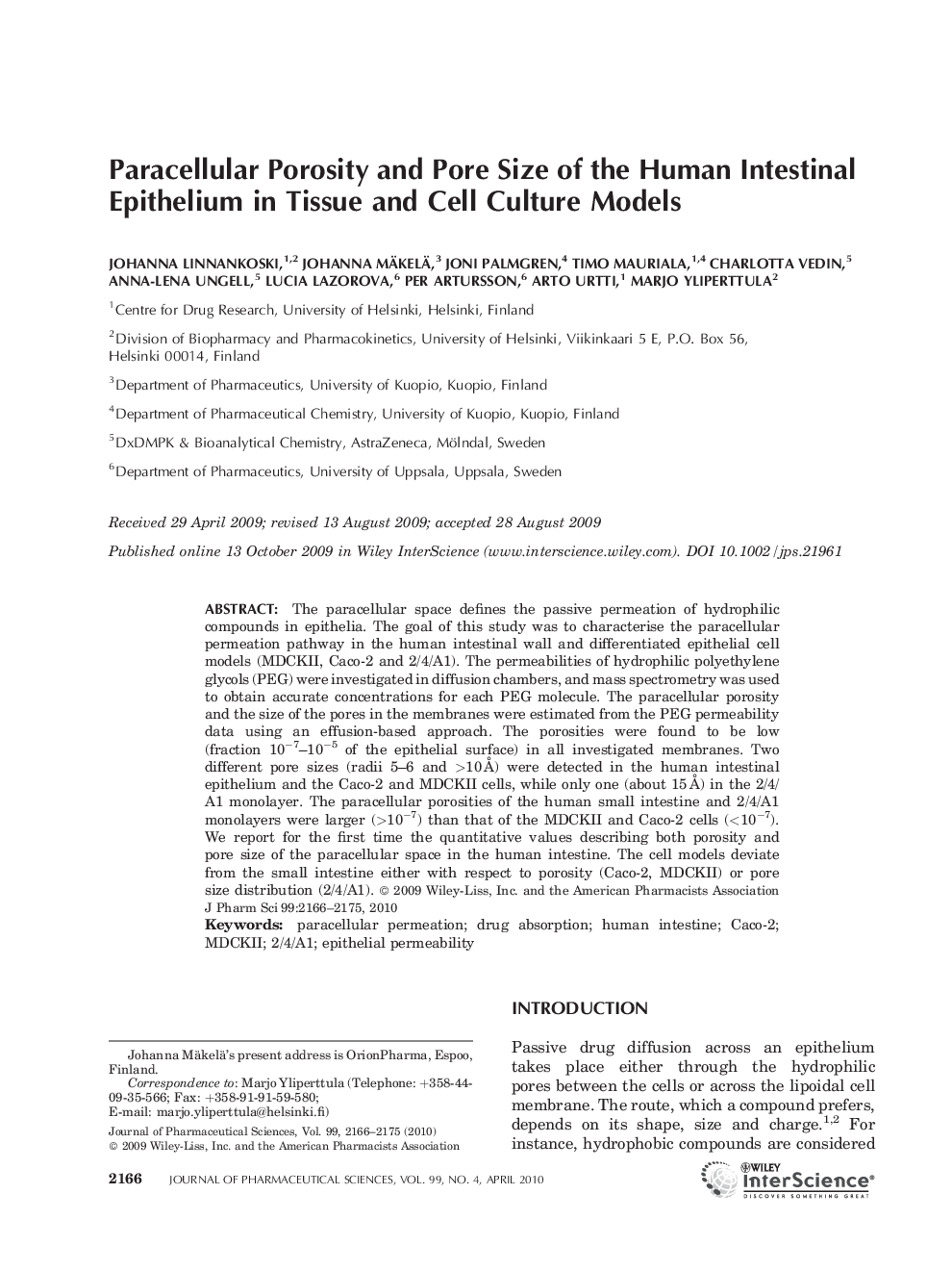| Article ID | Journal | Published Year | Pages | File Type |
|---|---|---|---|---|
| 2485129 | Journal of Pharmaceutical Sciences | 2010 | 10 Pages |
Abstract
The paracellular space defines the passive permeation of hydrophilic compounds in epithelia. The goal of this study was to characterise the paracellular permeation pathway in the human intestinal wall and differentiated epithelial cell models (MDCKII, Cacoâ2 and 2/4/A1). The permeabilities of hydrophilic polyethylene glycols (PEG) were investigated in diffusion chambers, and mass spectrometry was used to obtain accurate concentrations for each PEG molecule. The paracellular porosity and the size of the pores in the membranes were estimated from the PEG permeability data using an effusionâbased approach. The porosities were found to be low (fraction 10â7-10â5 of the epithelial surface) in all investigated membranes. Two different pore sizes (radii 5-6 and >10âÃ
) were detected in the human intestinal epithelium and the Cacoâ2 and MDCKII cells, while only one (about 15âÃ
) in the 2/4/A1 monolayer. The paracellular porosities of the human small intestine and 2/4/A1 monolayers were larger (>10â7) than that of the MDCKII and Cacoâ2 cells (<10â7). We report for the first time the quantitative values describing both porosity and pore size of the paracellular space in the human intestine. The cell models deviate from the small intestine either with respect to porosity (Cacoâ2, MDCKII) or pore size distribution (2/4/A1). © 2009 WileyâLiss, Inc. and the American Pharmacists Association J Pharm Sci 99: 2166-2175, 2010
Related Topics
Health Sciences
Pharmacology, Toxicology and Pharmaceutical Science
Drug Discovery
Authors
Johanna Linnankoski, Johanna Mäkelä, Joni Palmgren, Timo Mauriala, Charlotta Vedin, AnnaâLena Ungell, Lucia Lazorova, Per Artursson, Arto Urtti, Marjo Yliperttula,
